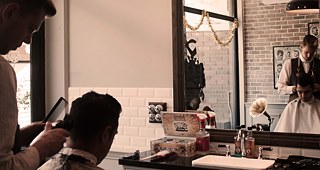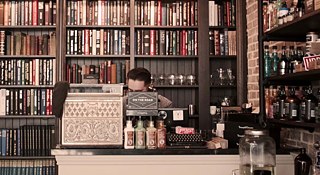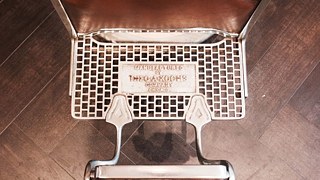Barber Shops
Sculpting a modern Gentleman

Over the past few years, stylish little barber shops have been popping up on street corners and down esoteric alleyways, all with one goal in mind: carving out Sydney’s modern gentleman. From the birth of the sophisticated ‘metrosexual’ to the dawn of the brawny, beard clad ‘lumbersexual’ our recent history has been enthusiastic to earmark the evolution of men’s grooming habits. And today is no exception - there has been a wealth of curiosity surrounding the contemporary inner-city barber shop. Employment of barbers has also increased by 5.8 percent over the past five years due to their popularity, particularly with young men.
Recent research has come out from The University of Western Australia suggesting that male urbanites grow and shape their facial hair as a kind of visual shorthand to communicate their unique masculine identity. This conclusion emerged from studies into primate groups where the degree of intensity of distinguishing facial hair increased in conjunction with the population size of the group. It is theorized that distinguishing features in high density populations of both primates and humans are employed to attract females that may not otherwise know anything about the individual.
Barber shops have long served as a cornerstone for hosting masculine discourse and emerging social change. Most significantly, ‘black barbers’ provided custom to African-American slaves who were eventually able to purchase their freedom. Beyond that, black barber shops became places where black men could discuss everyday life in America and obtain hair styles that assisted them to fit in and participate amongst dominant white society. The history of Greek barbering however, can be traced back to the fifth century BC where beards were major status symbols. The spaces were exclusively for men to discuss politics and sport whilst having their beards trimmed, curled and even perfumed. Broadly speaking however, barber shops have come in and out of fashion over the centuries in accordance with economic shifts, fashion trends and technological advancements (i.e. the invention of the Gillette razor in 1904).

Far removed from the experience of going to a women’s hair salon, men can walk into their local barber shop on a whim for a haircut and have a beer and a chat while they wait. In reading the reviews of Benicky & Sons, it’s apparent that his clients are treated to top class banter and conversation, which he has said comes part and parcel with the experience of visiting his shop. ‘‘I need my clients to know I genuinely care about them and what's going on in their lives. A real experience rather than just a haircut’’, he says.
The Evolution of the Gentleman’s Beard
Refined grooming has been a long time coming in Sydney. It comes just off the back of the lumbersexual craze where the ultra-trendy hipster would sport a lusciously thick beard. Accessorizing and shaping came into vogue as the beard transformed into a kind of investment that had to be earned and nurtured. Consequently, a mass desire for attention and precision in facial and head hair emerged. From there, classic masculine styles like the ‘short back and sides’ regained their appeal thanks to the popularity of twentieth century period dramas like The Great Gatsby, Boardwalk Empire and Mad Men. Much of the decor and ambiance from these eras have been brought into this new string of barber shops to give the environment a gentlemanly and sophisticated vibe. This, Luke says is an essential aspect of the experience as he wishes ‘‘to send men back into the world, feeling confident, genuine, humble and overall improved after having a haircut or shave’’.